27
Addressing Health Disparities in Medication Safety Research

Medication Safety Disparity Calculator
How Your Background Affects Medication Safety
Based on data from the article, certain demographic factors increase medication safety risks due to systemic inequities in healthcare. This calculator estimates your risk profile using evidence-based factors.
Every year, millions of people around the world suffer harm from medications that should have kept them safe. But not everyone is equally protected. People of color, older adults, non-English speakers, and those with low income are far more likely to experience medication errors - and far less likely to have those errors reported, studied, or fixed. This isn’t just bad luck. It’s a system failure.
Medication Errors Don’t Happen Equally
A 2025 study across five NHS hospitals found that patients from certain racial and ethnic groups had significantly fewer medication incidents reported - not because they made fewer mistakes, but because their concerns were overlooked. Black, Asian, and Hispanic patients were less likely to have their complaints about wrong doses, missed medications, or confusing instructions taken seriously. The same study showed that male patients and those identifying as white were more likely to have their reports logged. That’s not a reflection of behavior. It’s a reflection of bias. Why does this happen? Language barriers play a big part. A patient who doesn’t speak English fluently may not know how to ask for help. Or they may have been told before that their concerns won’t be heard, so they stay quiet. Cultural norms can also silence people. In some communities, questioning a doctor is seen as disrespectful. And when patients don’t speak up, errors go unreported - and uncorrected.Clinical Trials Are Missing Key Populations
If a drug hasn’t been tested on you, how can you know it’s safe for your body? From 2014 to 2021, Black Americans made up only one-third of the participants in clinical trials for diseases they were most affected by. That gap hasn’t improved. Even during the COVID-19 vaccine trials - where diversity was a major focus - Black and Hispanic people were still underrepresented compared to their share of the population. This isn’t just about fairness. It’s about safety. Medications affect people differently based on genetics, metabolism, and other factors tied to race and ethnicity. When trials lack diversity, we miss critical safety signals. In 2021, the U.S. Preventive Services Task Force couldn’t issue specific colorectal cancer screening guidelines for Black patients - not because the risk isn’t higher, but because there wasn’t enough data from Black participants in the studies. And when new drugs finally come to market, the cost is often out of reach. In 2022, nearly 19% of Hispanic Americans and 11.5% of Black Americans were uninsured. For White Americans, that number was just 7.4%. If you can’t afford the medication, even a perfectly safe one doesn’t help you.Doctors’ Biases Are Still Shaping Prescriptions
Implicit bias doesn’t always look like racism. Sometimes, it’s a doctor assuming a patient won’t follow instructions, so they prescribe a simpler - but less effective - drug. Or they underestimate a patient’s pain because of false beliefs about pain tolerance in Black patients. A 2024 study in JAMA Network Open found that these unconscious assumptions lead to higher use of dangerous over-the-counter painkillers among underserved groups - not because patients chose them, but because clinicians didn’t offer better options. These biases aren’t just personal. They’re built into systems. Electronic health records often use algorithms that recommend treatments based on past data - data that reflects historical inequities. If Black patients were historically underprescribed opioids for pain, the algorithm learns to do the same - even if the patient’s condition has changed.
The World Health Organization’s Plan - And Why It’s Falling Short
In 2017, the World Health Organization launched its Medication Without Harm initiative, aiming to cut severe medication-related harm by 50% in five years. The plan had the right structure: focus on patients, professionals, medicines, and systems. It even included equity as a core goal. But here’s the problem: 86 countries signed on. Only a handful actually changed their systems to track disparities. High-income nations like Australia and the UK have made progress in collecting demographic data on medication errors. But in low- and middle-income countries - where access to basic medicines is already limited - there’s little to no data collection at all. Without knowing who’s being harmed, you can’t fix it.What’s Actually Working?
Some hospitals are starting to do things differently. One hospital in Chicago started training pharmacists to ask patients: “Do you ever feel confused about your medicines?” - not just “Do you take your pills?” That simple shift led to a 40% increase in error reporting among non-English-speaking patients. Another initiative in California paired community health workers with patients who had complex medication regimens. These workers spoke the same languages, understood the cultural context, and helped patients navigate confusing pill schedules. Within a year, hospital readmissions due to medication errors dropped by 32% in those communities. The Joint Commission, which accredits U.S. hospitals, now lists equity as a patient safety priority. But only 32% of hospitals have formal programs to address medication safety disparities. The rest say they care - but don’t act.
What Needs to Change
There are five clear steps that can make a real difference:- Collect demographic data on all medication errors. You can’t fix what you don’t measure. Hospitals need to track errors by race, language, age, and income - not just by type of mistake.
- Require diverse clinical trials. Regulators like the FDA should require that new drug trials include patient populations that reflect the disease’s real-world impact.
- Train staff in cultural humility. It’s not enough to offer translation services. Staff need to understand how cultural beliefs shape how patients see medicine, illness, and authority.
- Invest in community-led safety programs. Patients know their own risks. Let them help design solutions. Community health workers, faith leaders, and local advocates are often the most trusted voices.
- Use technology wisely. AI can help spot patterns - but only if it’s trained on fair data. Algorithms that ignore race and income might seem neutral, but they’re blind to the real disparities.
The Bottom Line
Medication safety isn’t just about pills and prescriptions. It’s about power, trust, and who gets heard. Right now, the system is designed for the majority - and everyone else pays the price in preventable harm. Fixing this won’t happen with a single policy or a new app. It needs ongoing work: better data, better training, better listening. The goal isn’t to make safety equal for everyone. It’s to make sure no one is left behind because of the color of their skin, the language they speak, or how much money they have. That’s not just ethical. It’s the only way to make real progress on a problem that affects us all.Why are medication errors underreported in minority communities?
Medication errors are underreported in minority communities because of language barriers, cultural mistrust of healthcare systems, fear of being dismissed, and lack of culturally competent communication. Patients may not know how to report issues, or they’ve experienced being ignored in the past, leading them to stay silent even when something goes wrong.
How does lack of diversity in clinical trials affect medication safety?
When clinical trials don’t include enough people from diverse racial and ethnic backgrounds, we miss how medications affect different bodies. This can lead to unsafe dosing, unexpected side effects, or ineffective treatments for certain groups. For example, some heart medications work differently in Black patients, but without enough data, doctors may not know how to adjust prescriptions safely.
Are AI tools helping or hurting medication safety for marginalized groups?
AI tools can help by spotting patterns in medication errors across populations - but only if they’re trained on fair, representative data. Many existing algorithms are built on biased historical data, which means they may wrongly flag certain patients as non-compliant or low-risk, leading to dangerous oversight. Without intentional design for equity, AI can reinforce - not fix - disparities.
What can patients do if they suspect a medication error?
Patients should ask questions: “What is this medicine for?” “What side effects should I watch for?” “Can you write this down?” If they feel ignored, they can ask to speak with a pharmacist or patient advocate. Many hospitals have patient safety offices that take complaints seriously. Keeping a written list of all medications and sharing it at every visit also reduces error risk.
Why don’t more hospitals have programs to reduce medication safety disparities?
Many hospitals say they care about equity but lack funding, staff, or clear guidelines to act. Tracking disparities requires extra data collection and analysis, which takes time and resources. Without mandates or financial incentives, most hospitals focus on easier, more visible safety goals - leaving systemic inequities unaddressed.
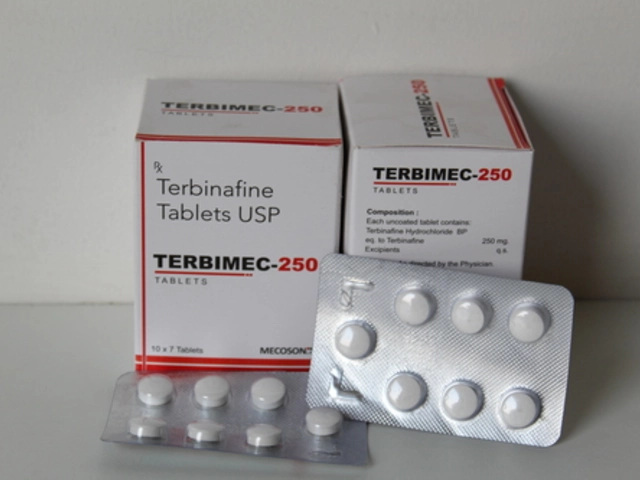
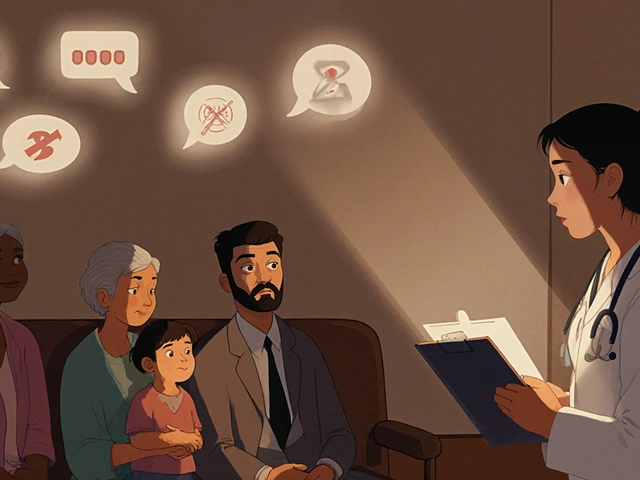
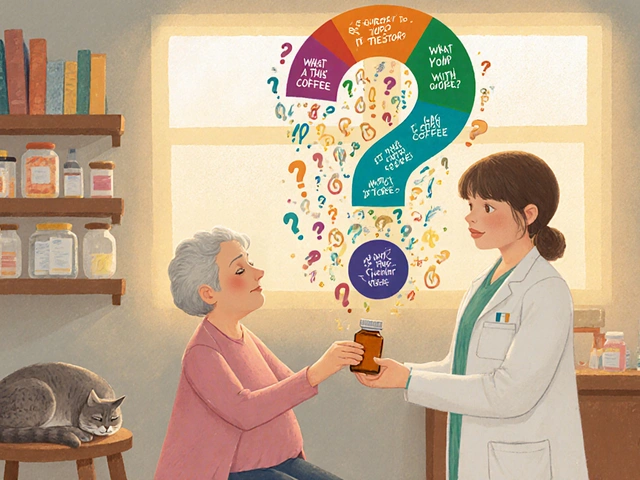
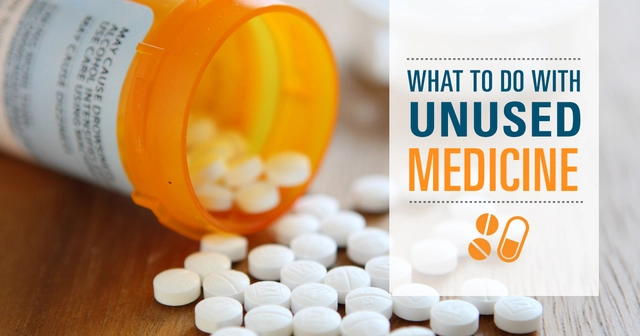


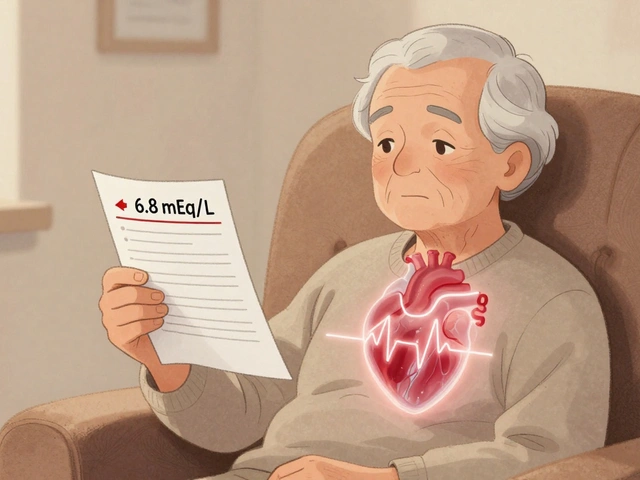
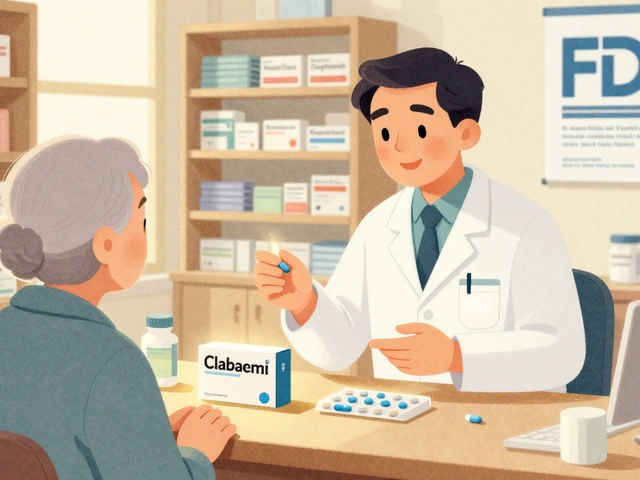


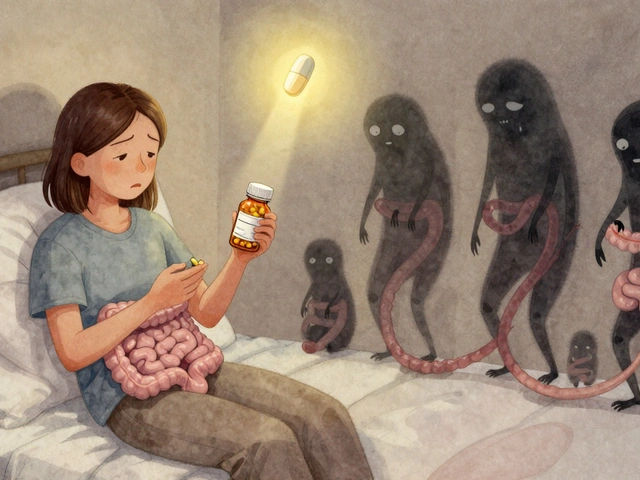
giri pranata
October 28, 2025 AT 14:50Yo, this hits hard. I’ve seen it firsthand in my uncle’s hospital visits - he’s Tamil-speaking and got prescribed the wrong med because the nurse just assumed he understood. No translator, no follow-up. He ended up in ER. Not because he was careless - because the system didn’t care enough to listen.
Community health workers? YES. We need more of them. Not just translators - cultural bridges. People who know when to sit quietly, when to push, when to joke to ease tension. That’s real safety.
And AI? Don’t let it be trained on broken data. If it thinks Black patients ‘don’t comply’ because of past underprescribing, it’s just automating racism. We need audits. Like, real ones. Not just checkbox stuff.
Stuart Rolland
October 29, 2025 AT 02:15Look, I get that this is a systemic issue, but let’s not pretend it’s all about bias. There’s also a massive infrastructure gap - in rural India, in Appalachia, in inner-city Chicago - where pharmacies are 20 miles away, and people are choosing between insulin and bus fare. The fact that medication safety is even being discussed as a ‘disparity’ issue feels like a luxury. What about the people who don’t even have a primary care provider? Who’s tracking their errors? No one. Because they’re invisible to the system.
And yeah, clinical trials are messed up, but let’s be real - recruiting diverse participants isn’t just about ethics, it’s logistics. You need community trust, transportation, childcare, paid time off - things most trials don’t fund. So when they say ‘we tried,’ they mean they posted a flyer in a clinic that closed last year. This isn’t just a data problem. It’s a funding and will problem. And until we fund community orgs like we fund pharma lobbying, we’re just rearranging deck chairs on the Titanic.
Kent Anhari
October 29, 2025 AT 12:25As someone who’s worked in global health for 15 years, I’ve seen this exact pattern in Nigeria, Peru, and rural Georgia. The same silence. The same assumptions. The same ‘we meant well’ excuses.
But here’s the thing - culture isn’t a barrier. It’s a tool. In Ghana, we trained local barbers to ask clients about their meds while giving haircuts. Why? Because people trust the barber more than the doctor. That’s cultural humility in action. Not translating forms. Not adding a checkbox. Actually meeting people where they are.
And if your hospital doesn’t have a patient advocate who speaks the same language as your most vulnerable patients? You’re not just failing. You’re endangering them.
Charlos Thompson
October 31, 2025 AT 11:59Oh wow. Another ‘systemic racism in meds’ op-ed. Let me guess - next you’ll tell us that aspirin works differently on people who don’t like jazz? 🤡
Let’s be honest - most medication errors happen because people forget to take their pills. Or they mix them with grapefruit juice. Or they think ‘natural remedies’ are safer than FDA-approved drugs. And suddenly we’re blaming the algorithm? The doctor? The system? Nah. It’s called human behavior. And no amount of ‘cultural humility training’ is gonna fix someone who thinks their grandma’s tea cures diabetes.
Also, why are we still talking about race? I’m half-Chinese, half-Irish. Which box do I check? And why does my diabetes risk suddenly depend on my skin tone and not my sugar intake? This isn’t science. It’s activism with a lab coat.
Peter Feldges
November 1, 2025 AT 10:40While I appreciate the intent behind this piece, I must respectfully challenge the conflation of statistical disparities with intentional bias. The data presented - while compelling - does not, in and of itself, prove discriminatory intent. Correlation ≠ causation.
For instance, lower reporting rates among non-English speakers may reflect systemic under-resourcing of translation services, not clinician malice. Similarly, underrepresentation in clinical trials may stem from historical mistrust, logistical barriers, or eligibility criteria - not exclusionary policy.
That said, the proposed solutions - demographic data collection, community-led programs, algorithmic audits - are not only valid but urgently necessary. What’s missing, however, is a clear cost-benefit analysis. Who funds this? Who implements it? And how do we avoid creating a new layer of bureaucratic burden that further strains frontline providers?
Equity without operational feasibility is performative. Let’s not mistake symbolism for substance.
Richard Kang
November 2, 2025 AT 08:57OKAY SO I JUST READ THIS AND I’M FURIOUS!!
WHY DO HOSPITALS STILL USE OLD AI THAT THINKS BLACK PEOPLE DON’T NEED PAIN MEDS??
AND WHY ARE WE STILL DOING CLINICAL TRIALS WITH 90% WHITE PEOPLE IN 2025??
AND WHY DID THE WHO EVEN BOTHER LAUNCHING A PLAN IF NO ONE ACTUALLY CHANGED ANYTHING??
THIS ISN’T A ‘DISPARITY’ - IT’S A CRIME.
AND THE FACT THAT YOU CAN WRITE A 2000-WORD ARTICLE ABOUT IT AND STILL NO ONE’S IN JAIL??
WHY AREN’T HOSPITALS GETTING FEDERAL FUNDS CUT??
WE’RE TALKING ABOUT PEOPLE DYING BECAUSE A COMPUTER WAS TRAINED ON RACIST DATA AND A DOCTOR WAS TOO LAZY TO ASK IF THEY UNDERSTOOD THEIR PRESCRIPTION.
THIS ISN’T JUST BROKEN. IT’S EVIL.
AND I’M NOT EVEN MAD - I’M JUST SAD. 😭
Rohit Nair
November 2, 2025 AT 18:14Man, I read this while waiting for my mom’s prescription in Delhi. She’s 72, speaks only Hindi, and the pharmacist didn’t even look at her. Just handed her the bottle. I had to translate the label. That’s it. That’s the whole system.
They don’t need fancy AI. They need someone who speaks her language. Someone who sits down. Someone who doesn’t rush.
And yeah, I know it’s hard. But if we can build satellites, we can build better medicine. We just don’t care enough.
Also, typo: ‘medications’ not ‘medications’ - oops 😅
Wendy Stanford
November 3, 2025 AT 12:21It’s not about the pills. It’s about the silence. The way the system teaches people to shrink. To nod. To say ‘yes’ when they mean ‘I don’t understand.’ To believe that if they speak up, they’ll be labeled ‘difficult.’
And then we wonder why they don’t report errors.
It’s not ignorance. It’s trauma.
And every time a hospital says ‘we’re working on it’ without changing how they hire, train, or pay their staff - they’re not fixing anything. They’re just rehearsing the same grief over and over.
I’ve sat in waiting rooms where people cried because their doctor didn’t believe their pain. I’ve held hands while they waited for a translator who never came.
This isn’t policy. It’s mourning.
And we’re all just spectators.
Jessica Glass
November 4, 2025 AT 14:06Oh please. Let me guess - next you’ll say white people are ‘privileged’ for being able to read their own prescriptions? 😒
Here’s a radical idea: What if the problem isn’t racism - but laziness? People don’t take their meds because they’re lazy. They don’t ask questions because they’re too busy scrolling TikTok.
And now we’re blaming the system because someone didn’t get a fancy translator? Newsflash: I speak English and I still forget my pills. Guess what? I don’t get a medal for it.
Also, ‘cultural humility’? That’s just corporate jargon for ‘we don’t know how to talk to people who aren’t like us, so let’s pay someone to say nice words.’
Stop turning healthcare into a woke morality play. Just fix the damn system. Or stop pretending you care.
Krishna Kranthi
November 5, 2025 AT 12:03Bro. In my village in Kerala, the local pharmacist knows everyone’s meds by heart. No app. No AI. Just a guy who remembers your kid’s birthday and asks if you’re sleeping better. That’s the model.
We don’t need more data. We need more humans who give a damn.
And yeah, I know the system says ‘scale this’ - but you can’t scale trust. You can’t automate compassion. You can’t code empathy into an EHR.
So stop over-engineering. Just hire people who look like the patients. Pay them enough. Let them talk. Let them listen.
And if you’re reading this and you’re a hospital admin? Go sit in a waiting room. For a whole day. Not with a clipboard. Just sit.
Then come back.
And tell me if you still think ‘data collection’ is the solution.
Lilly Dillon
November 6, 2025 AT 22:50I’ve worked in ERs for 12 years. I’ve seen the same thing over and over. A patient comes in with chest pain. They’re Hispanic. The doctor says ‘probably anxiety.’ They come back two weeks later with a heart attack.
No one meant to hurt them. No one was racist. But no one asked the right questions.
It’s not malice. It’s habit.
And habits are hard to break.
But we have to.
Because someone’s life is always one missed question away from being over.
Shiv Sivaguru
November 7, 2025 AT 09:59This whole thing is just woke theater. Who cares if Black patients get fewer opioids? Maybe they don’t need them. Maybe they’re just faking pain to get free drugs. I’ve seen it.
And clinical trials? Why should we waste money testing on people who don’t even take their meds? Just give the same pills to everyone. If it works for white folks, it’ll work for everyone else.
Also, why is everyone so obsessed with race? I’m brown and I don’t want special treatment. I want the same crap everyone else gets.
Stop making everything about identity. Just fix the meds. Not the people.
Gavin McMurdo
November 9, 2025 AT 04:38Let’s cut the crap. This isn’t about equity. It’s about control.
The WHO doesn’t care about patients. They care about metrics. They care about PR. They care about being seen as ‘progressive’ while doing nothing real.
And the ‘community-led programs’? Cute. But who funds them? Who trains them? Who holds them accountable? No one. So they become performative theater - a photo op with a clipboard and a slogan.
Real change requires power. Real change requires redistribution. Real change requires taking resources from the elite and giving them to the marginalized.
And guess what? No one in this system wants that.
So we get articles. We get panels. We get hashtags.
And people still die.
Because the system isn’t broken.
It’s working exactly as designed.
Jesse Weinberger
November 10, 2025 AT 15:05Wait… so if a drug was tested on 90% white people and it causes liver damage in Black patients… we’re supposed to blame the algorithm? Nah. Blame the people who didn’t test it on enough people. Blame the FDA for letting it slide. Blame the doctors who didn’t think to ask.
But no - let’s blame the ‘system’ and ‘bias’ and ‘historical trauma’ and ‘cultural humility’ and ‘AI trained on bad data’.
Meanwhile, the guy who didn’t read the label? He’s just… out of luck.
Look. I get it. People want to feel morally superior. But medicine isn’t a social justice seminar. It’s science. And science doesn’t care about your feelings.
Fix the trials. Fix the training. Fix the access.
Stop turning a public health crisis into a TED Talk.